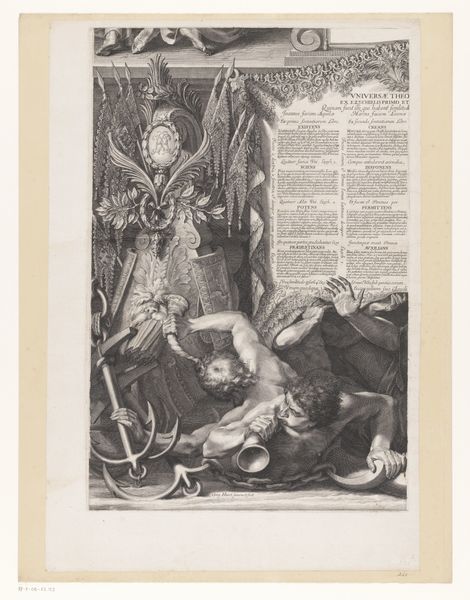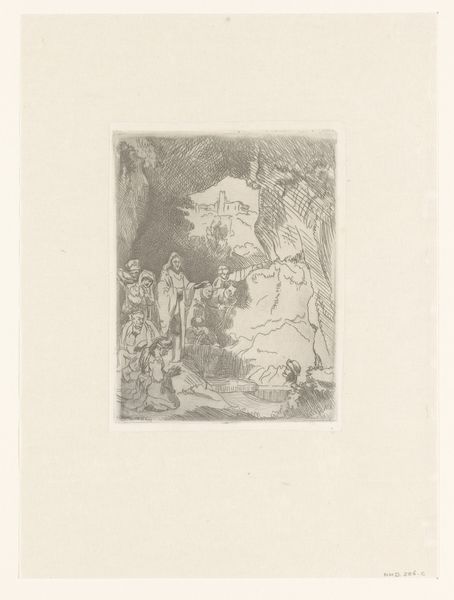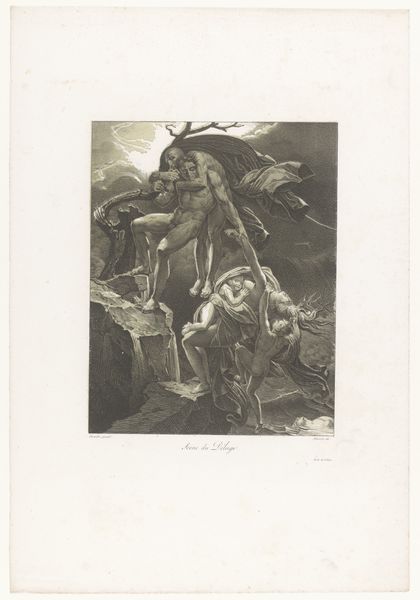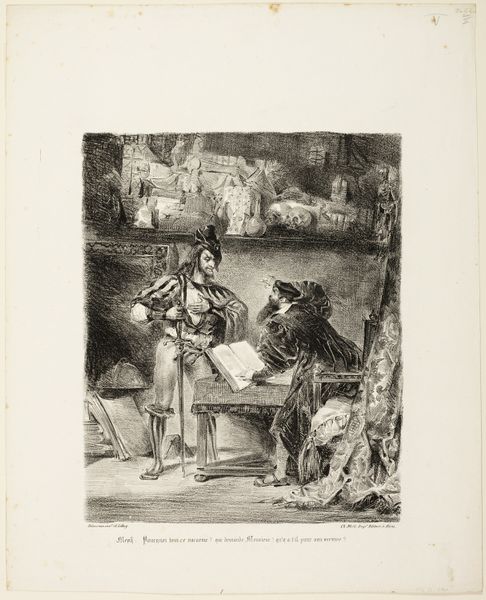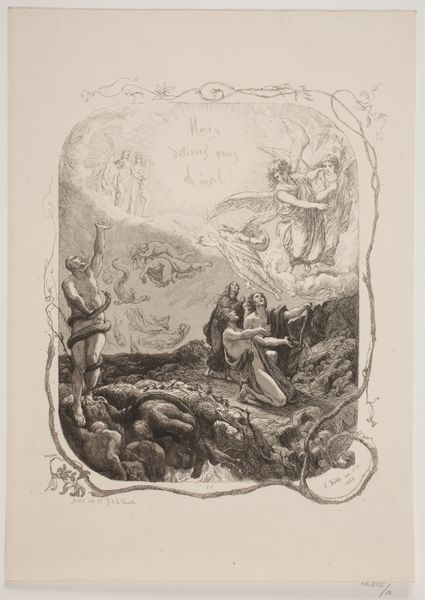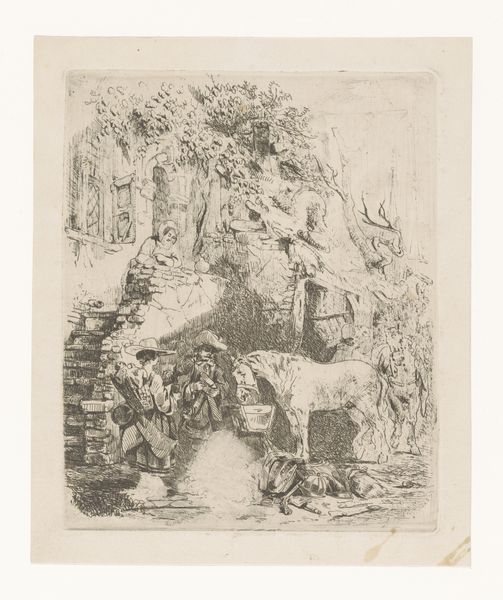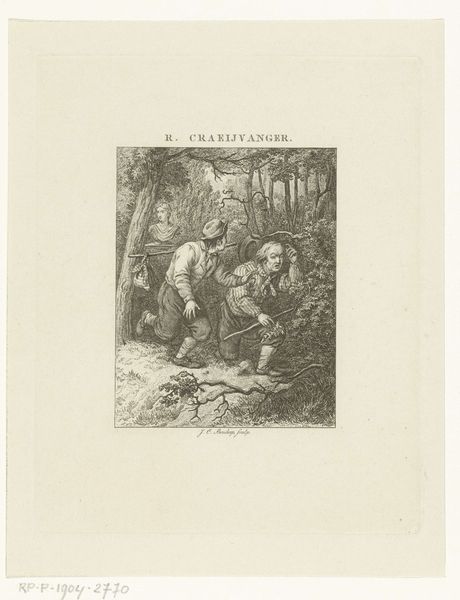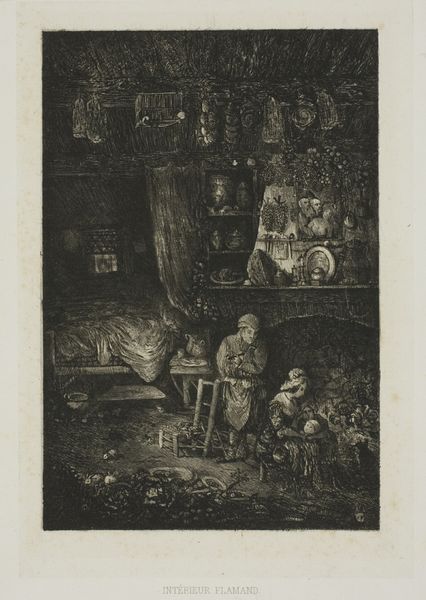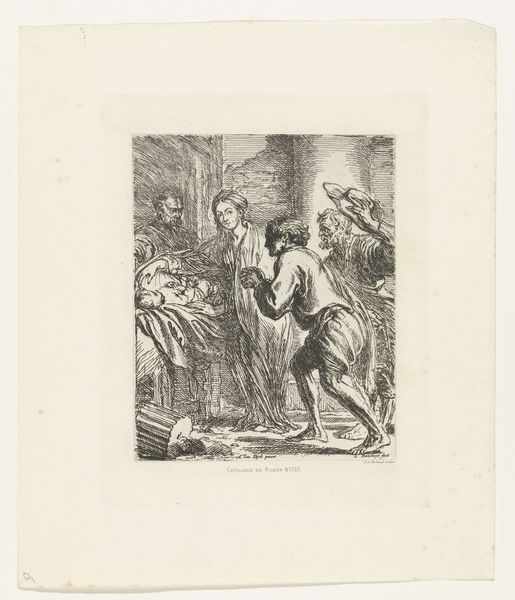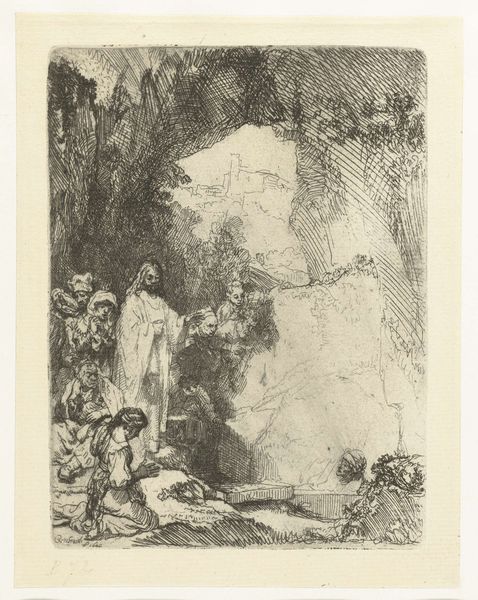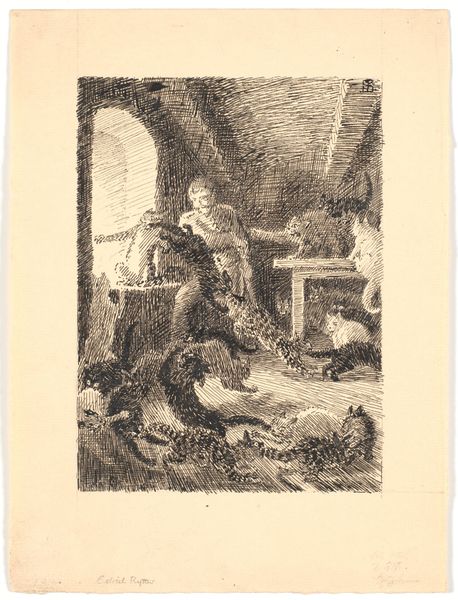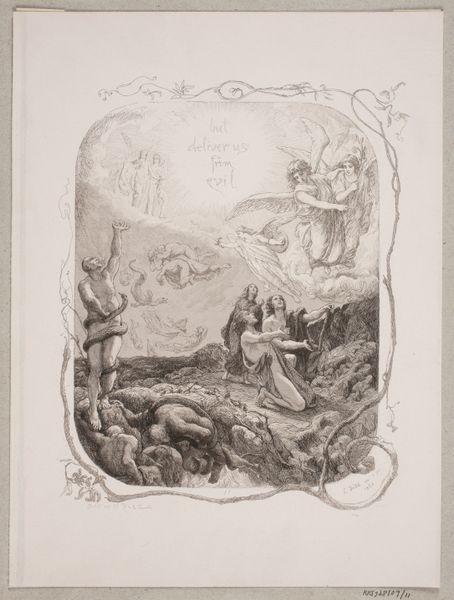
print, etching, engraving
#
baroque
# print
#
etching
#
landscape
#
history-painting
#
engraving
Dimensions: height 405 mm, width 259 mm
Copyright: Rijks Museum: Open Domain
Editor: So this is "Titelprent met titel op een urn" by Giovanni Battista Piranesi, from around 1756-1757. It’s an etching and engraving. I’m struck by how theatrical it feels, almost like a stage set with all these fragmented classical objects. What do you see in this piece, Professor? Curator: It's fascinating, isn’t it? Consider the urn, not just as a container, but as a vessel of memory itself. What stories do you think it’s meant to tell? Notice how Piranesi uses fragments - broken pottery, crumbling architecture. They act as potent symbols of a lost golden age. He is actively summoning the grandeur and the melancholy of the past. The very act of excavation is laden with emotional weight, isn’t it? Editor: That makes a lot of sense. I hadn’t really thought about the urn as representing collective memory. But what about the somewhat chaotic arrangement? Curator: Precisely. The "chaos" can be read as a kind of visual palimpsest, with layers of history and symbolism bleeding into one another. Look at the arch above the Urn – that is no ordinary arch. And yet it's fragmented and hard to resolve. Piranesi is making an argument here about how we perceive the past. Are you convinced? Editor: Definitely, I now have to think of the past not as set of facts to discover, but symbols and memories we have to decode. I was focused on the style, and neglected the symbology. Thanks. Curator: Symbolism requires looking at a world beyond our immediate, so I'm glad I helped steer you towards what matters!
Comments
No comments
Be the first to comment and join the conversation on the ultimate creative platform.
